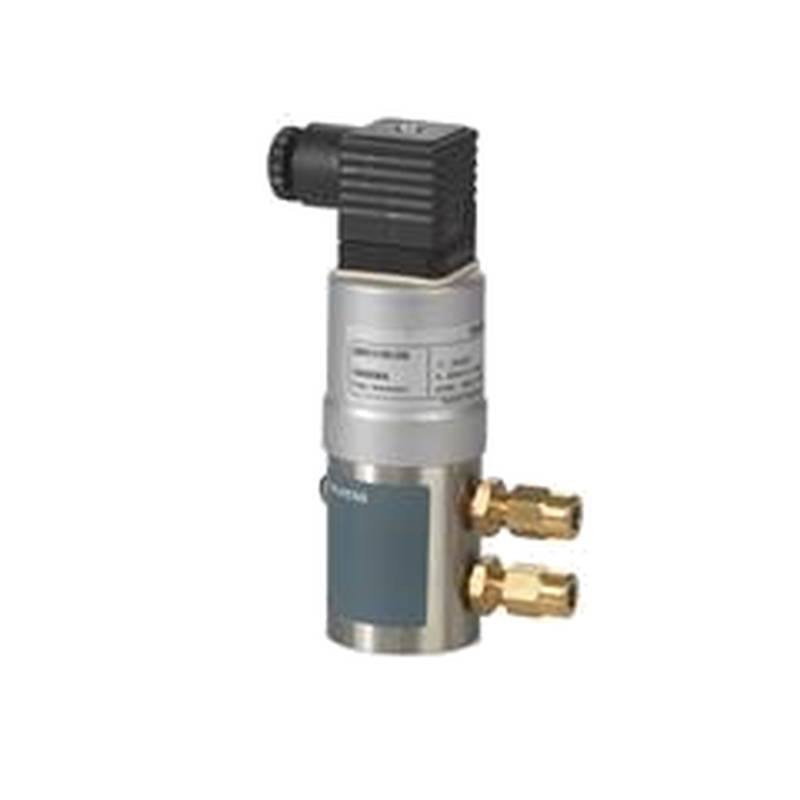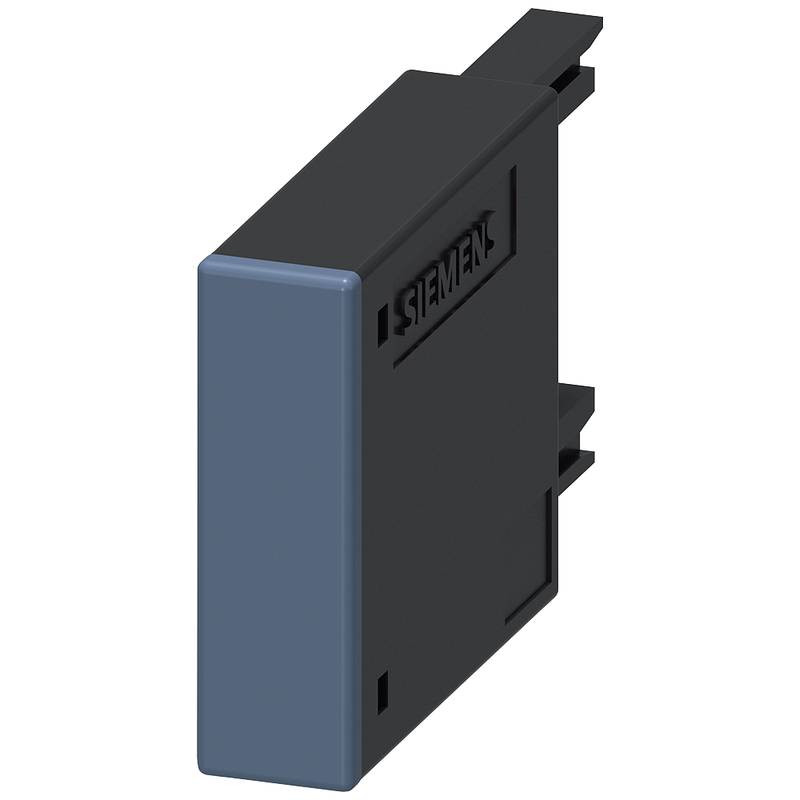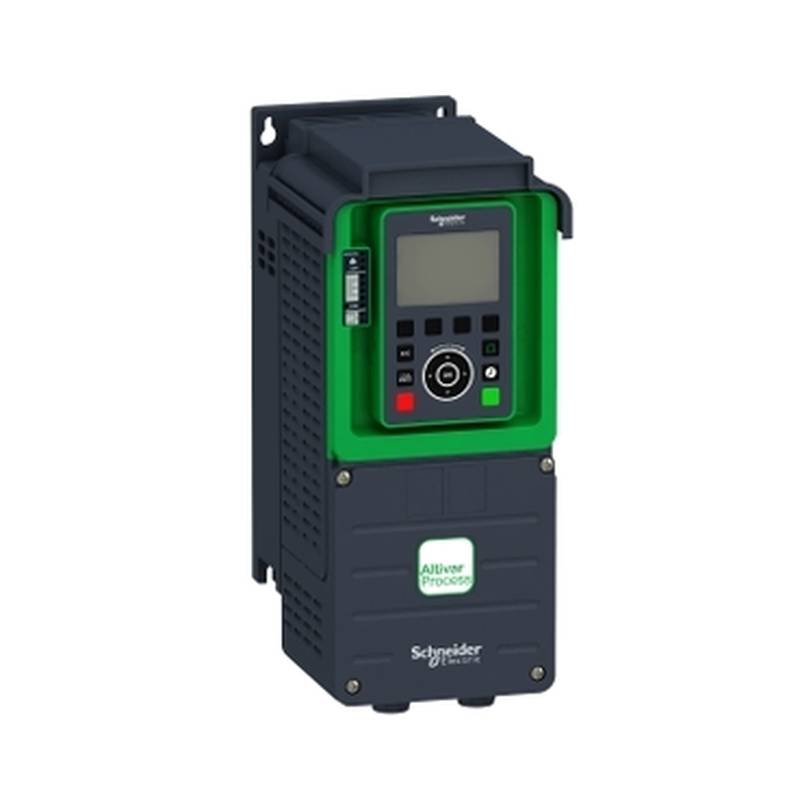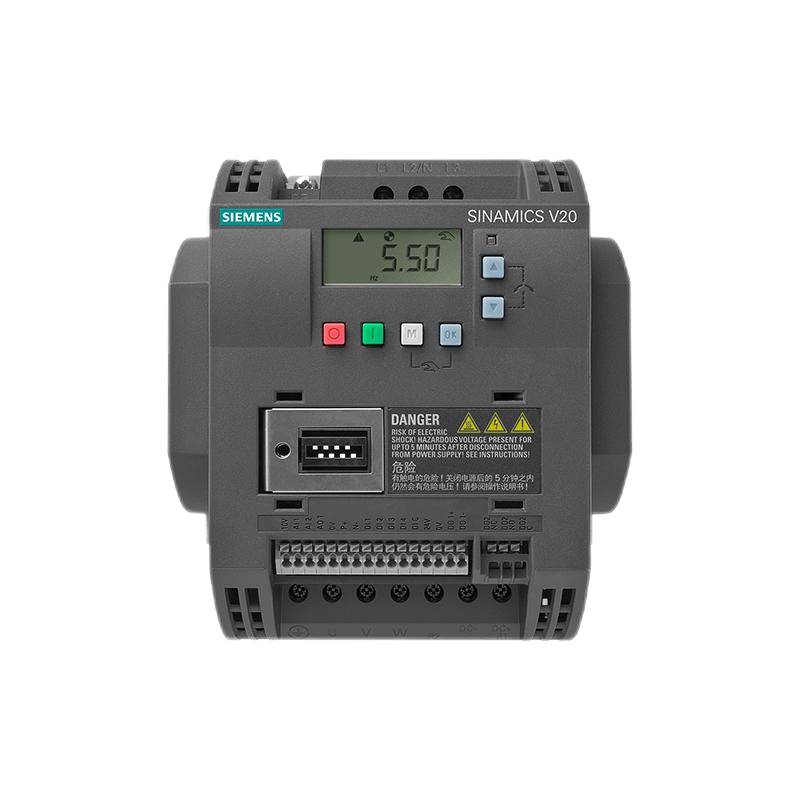
The Siemens 5SU9356-2CN25 RCBO offers robust protection for power control systems, integrating overcurrent and earth leakage protection into a single, compact device. With a 25A rating and 30mA sensitivity, it ensures critical safety and operational continuity. This 1P+N (Single Pole + Neutral) device features a Type D tripping characteristic, making it suitable for circuits with high inrush currents, such as those powering motors or transformers. Its advanced design minimizes nuisance tripping while providing essential protection against electric shock and fire hazards caused by earth faults. The Siemens 5SU9356-2CN25 stands as a reliable and efficient solution for diverse industrial and commercial power distribution needs.
Product Specifications
| Feature | Specification |
| :-------------------- | :--------------------------------- |
| Product Type | RCBO (Residual Current Circuit Breaker with Overcurrent Protection) |
| Model Number | 5SU9356-2CN25 |
| Rated Current (In) | 25 A |
| Rated Residual Current (IΔn) | 30 mA |
| Number of Poles | 1P+N (Single Pole + Neutral) |
| Tripping Characteristic | Type D |
| Breaking Capacity (Icn) | 6 kA |
| Voltage Rating (Un) | 230/400 V AC |
| Frequency | 50/60 Hz |
| Terminal Type | Screw Terminals |
| Mounting Type | DIN Rail |
| Operating Temperature | -25°C to +55°C |
| Protection Class | IP20 (device), IP40 (enclosure) |
Core Features & Market Positioning
The Siemens 5SU9356-2CN25 RCBO distinguishes itself through its integrated functionality, combining the protective elements of a miniature circuit breaker (MCB) and a residual current device (RCD) into one unit. This integration streamlines electrical panel design and installation, reducing space requirements and component count, a significant advantage in space-constrained applications. The Type D tripping characteristic is a key differentiator, specifically engineered to accommodate inductive loads that exhibit high, short-duration current surges upon energization, such as motors, transformers, and welding equipment. This feature prevents premature tripping under normal operating conditions while maintaining high sensitivity to dangerous earth faults. Siemens' reputation for quality and reliability in industrial electrical components further solidifies the 5SU9356-2CN25's market position as a trusted solution for demanding environments where safety and operational integrity are paramount. Its robust construction ensures durability and long-term performance, even under challenging industrial conditions.
Key Application Scenarios
This RCBO is ideally suited for protecting circuits that supply equipment with significant inrush currents, a common requirement in industrial manufacturing and heavy commercial settings. Applications include motor control circuits for pumps, compressors, and conveyor systems, where the Type D characteristic prevents nuisance tripping during motor startup. It is also highly effective in power distribution panels feeding machinery, large lighting systems, and heating elements that draw substantial current when initially activated. For areas requiring enhanced protection against electric shock, such as workshops, garages, or agricultural facilities, the 30mA residual current sensitivity offers critical safety. Furthermore, its compact 1P+N design makes it a practical choice for single-phase circuits in control panels, building management systems, and specialized equipment installations where space efficiency is a design priority.
Practical System Integration Guidance
Integrating the Siemens 5SU9356-2CN25 RCBO into existing or new electrical systems is straightforward due to its standard DIN rail mounting and familiar terminal configurations. For installation, ensure the main power supply is disconnected. The line conductor should be connected to the designated "L" terminal and the neutral conductor to the "N" terminal of the RCBO. Subsequently, connect the outgoing circuit's live and neutral conductors to the respective output terminals. Proper earthing of the connected equipment is crucial for the effective operation of the residual current protection. The device is designed for direct wiring, eliminating the need for separate overcurrent and earth leakage protection devices, thereby simplifying wiring diagrams and reducing potential connection errors. Always adhere to local electrical codes and standards during installation to ensure safety and compliance.
Operation and Risk Mitigation
The Siemens 5SU9356-2CN25 operates by continuously monitoring the balance of current flowing through the live and neutral conductors of a circuit. In the event of an earth fault, where current deviates from its intended path and flows to ground (e.g., through a person or faulty insulation), an imbalance is detected. The RCBO then rapidly interrupts the circuit, typically within milliseconds, to prevent electric shock and mitigate fire risks associated with persistent earth leakage currents. The Type D characteristic means it tolerates higher transient currents than standard Type B or C breakers, thus reducing unwanted shutdowns in applications with high inductive loads. Troubleshooting typically involves identifying the cause of the earth fault, such as damaged wiring or equipment malfunction, and rectifying it before resetting the breaker. Nuisance tripping, if it occurs despite the Type D rating, may indicate a persistent, low-level earth leakage or a circuit design issue that requires further investigation.
Scalability & Long-Term Value
The Siemens 5SU9356-2CN25 RCBO is designed for seamless integration within Siemens' broader industrial control and protection ecosystems, offering excellent scalability for future system expansions. Its compatibility with standard modular enclosures and DIN rail mounting ensures it can be readily incorporated into existing distribution boards or planned upgrades without requiring specialized hardware. While this specific model is a standalone protective device, its application can be scaled by deploying multiple units across various circuits requiring both overcurrent and earth leakage protection. For enhanced system monitoring and diagnostics, especially in larger industrial facilities, this RCBO can be part of a broader electrical infrastructure managed by Siemens' advanced automation and control platforms, such as SIMATIC S7 controllers, facilitating remote status monitoring and fault analysis, thereby contributing to predictive maintenance strategies and minimizing downtime.
Frequently Asked Questions (FAQs)
What is the primary function of the Siemens 5SU9356-2CN25 RCBO?
This device serves a dual protective role. It acts as a circuit breaker to safeguard against overcurrents like overloads and short circuits. Simultaneously, it functions as an earth leakage protection device to prevent electric shock.
It detects imbalances in current flow, indicating a potential fault path to earth. This dual functionality streamlines electrical panel design and reduces component requirements.
The 25A rating and 30mA sensitivity are key parameters for its application in specific power circuits.
Why is the Type D tripping characteristic important for this RCBO?
The Type D characteristic is crucial for circuits with high inrush currents. It allows for higher transient currents to flow without tripping the breaker.
This makes it ideal for protecting equipment like motors, transformers, and welding machines. These devices experience significant current surges when first powered on.
Without Type D, these normal operational surges could cause nuisance tripping, interrupting essential processes.
What types of applications are best suited for the 5SU9356-2CN25?
This RCBO is excellent for industrial and heavy commercial applications. It is particularly suited for circuits feeding motors, pumps, and compressors.
It also provides essential safety in workshops and agricultural settings due to its earth leakage protection. Its compact 1P+N design fits well in control panels.
Any application requiring protection against both overcurrent and earth faults, especially with inductive loads, benefits from this device.
How does the 30mA residual current sensitivity protect users?
A 30mA sensitivity means the RCBO will trip if it detects a leakage current of 30 milliamperes or more. This level is generally considered the threshold for causing serious harm to a person.
By rapidly disconnecting power, it significantly reduces the risk of electrocution. This makes it a vital safety feature for personnel.
It provides crucial protection against faults caused by damaged insulation or accidental contact with live parts.
Can the Siemens 5SU9356-2CN25 be used in residential settings?
While it offers excellent protection, the Type D characteristic is typically for industrial loads. Residential circuits usually use Type B or C breakers.
Using a Type D in a home might lead to unnecessary tripping with standard appliances. However, specific high-draw appliances might benefit.
For most domestic applications, standard MCBs and RCDs or RCBOs with B or C characteristics are more common.
What is the breaking capacity (Icn) of this RCBO and why is it important?
The 6 kA breaking capacity indicates the maximum fault current the RCBO can safely interrupt. This rating is critical for ensuring the device can withstand and safely clear severe short circuits.
It is essential to match the breaking capacity to the potential fault current levels in the installation. This prevents catastrophic failure of the protective device.
A higher breaking capacity provides greater safety margin, especially in industrial environments where fault currents can be substantial.
How is the Siemens 5SU9356-2CN25 installed and wired?
Installation involves mounting the RCBO on a standard 35mm DIN rail within a distribution board or enclosure. Power supply connections are made to the line (L) and neutral (N) terminals at the top.
The outgoing circuit conductors are then connected to the corresponding terminals at the bottom. Proper termination and tightening of screws are vital for reliable contact.
Always ensure the power supply is de-energized before commencing any wiring work and follow local electrical codes.
What troubleshooting steps should be taken if the RCBO trips frequently?
If the RCBO trips, first identify if it's an overcurrent or earth leakage trip. Check for visible signs of damage on connected equipment or wiring.
For earth leakage trips, isolate sections of the circuit to pinpoint the faulty appliance or wiring. Test insulation resistance if necessary.
For overcurrent trips, verify that the connected load does not exceed the 25A rating and check for short circuits in the load.
Is this RCBO compatible with Siemens' broader automation systems?
While the 5SU9356-2CN25 is a standalone protective device, its modular design allows for integration into larger electrical distribution systems. These systems can be managed by Siemens automation platforms.
For advanced monitoring, it can be part of a system where other intelligent devices provide communication capabilities. This RCBO relies on direct electrical signals for its operation.
In complex industrial setups, panels containing these RCBOs can be monitored by PLCs for status updates or fault logging.
What is the lifespan and maintenance requirement for the Siemens 5SU9356-2CN25?
Siemens products are known for their durability and long operational life. With proper installation and within rated environmental conditions, this RCBO should provide many years of reliable service.
Regular visual inspections of the electrical panel and connections are recommended. Periodic testing of the RCBO's tripping function using its test button is good practice.
No specific lubrication or complex mechanical maintenance is typically required for RCBOs during their operational life.
























